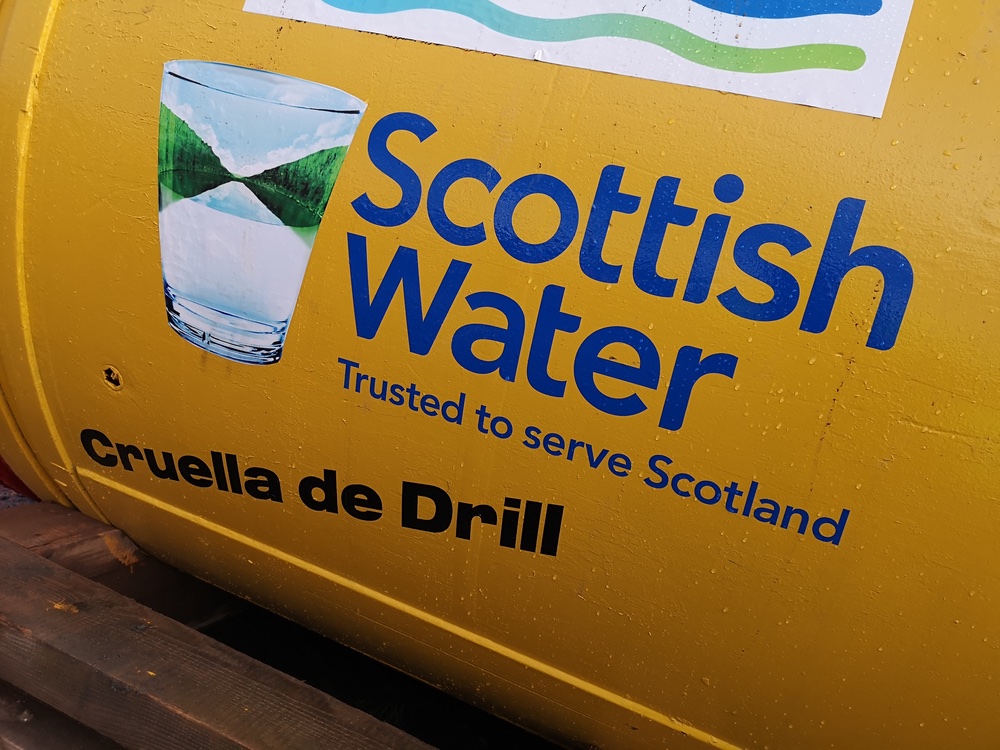A Glasgow schoolgirl has won a competition to name a ‘state-of-the-art’ tunnel boring machine as part of Scottish Water’s multi-million pound Glasgow resilience project.
Nieve O’Hara, a P7 pupil at Our Lady of the Rosary Primary in Cardonald, scooped top prize with her suggestion of ‘Cruella de Drill’ and paid a visit to the project site to see the tunnel boring machine in person.
The hi-tech machine will be installing a 252 metre stretch of trunk main 20 metres beneath the White Cart Water and the Paisley Canal railway line in the Nethercraigs area of the city. The project is being delivered by Scottish Water’s alliance partner Caledonia Water Alliance.
Scottish Water’s communication manager, Paul Milligan, said, “It has been fantastic working with Our Lady of the Rosary Primary School. They have brought so much energy and excitement to the project.
“A big congratulations to Nieve who choose a fantastic winning name for our tunnel boring machine.
“Also, a big thanks to their wonderful head teacher and teachers for allowing us to show them this innovative piece of engineering right on their doorstep.”
Concrete pipes that are 1500mm in diameter will be pipe-jacked into position at the rear of the tunnel boring machine and a 900mm ductile iron water main will be installed inside, with the work expected to take about six weeks to complete.
The Glasgow Resilience Project will benefit almost one million Scottish Water customers by connecting the Glasgow area’s network with the system in Ayrshire to improve security of supply.
Once complete, it will provide a two-way water supply between the Milngavie water treatment works system – which provides water for more than 700,000 people across much of the Glasgow area – and the Bradan WTW system which supplies more than 200,000 customers across much of Ayrshire. Almost 50,000 customers in East Renfrewshire will also benefit.
In the event of a disruption to water supply in either Ayrshire or Glasgow, the new system will allow millions of litres of water to be transferred in either direction, minimising the impact on customers if there is a burst main or other operational issue, Scottish Water said.
The project, which involves the use of ‘innovative’ construction materials and techniques to reduce carbon emissions and power requirements, is expected to be completed in 2024.









